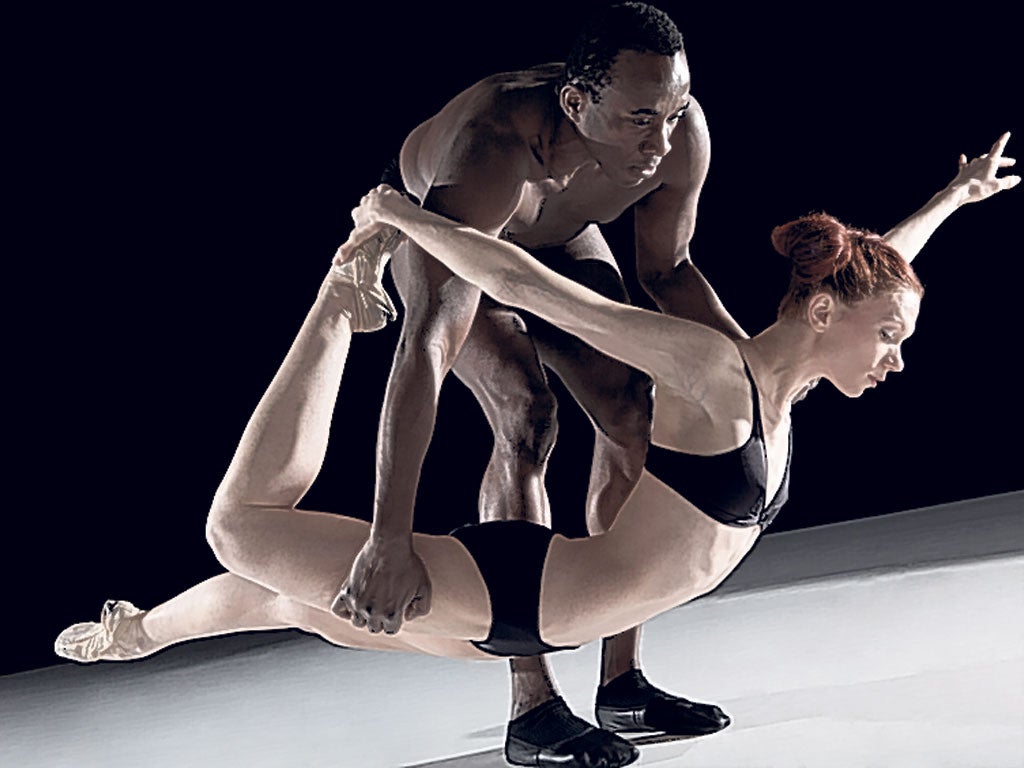Armitage Gone! Dance, Queen Elizabeth Hall, London

Karole Armitage's dances mix ballet technique and pop attitudes. It's a mix that made her name in the 1980s, when she was nicknamed the "punk ballerina". Her company still dance with precision, but there's a dry, repetitive quality to the upflung legs and walloping steps.
Like Michael Clark, another Eighties wild child, Armitage went on the rampage with a strong classical technique. She worked with Michael Jackson, and choreographed the "Vogue" video for Madonna. As part of Dance Umbrella, her company gave its first British performances since the 1980s, with the early hit Drastic-Classicism and a new version of a recent work.
Two Theories is the "Quantum" and "String" sections from Three Theories, inspired by theoretical physics (the third was Einstein's theory of relativity). For "Quantum", dancers in black underwear thrust themselves into extreme poses to the crashing guitar chords of Rhys Chatham's score. For "String", to softer music by John Luther Adams, they bend and wriggle more.
The dancers move with clean line, taking care with the quirks of Armitage's steps. Some of the women are in pointe shoes, some in soft socks. Feet flex at the end of an arabesque. Armitage's company move confidently into their splits and poses, but they don't find much variety in this choreography. It's one lunging step after another.
The 1981 work, Drastic-Classicism, is more fun. The first dancer slouches out, dressed in laddered black tights and sweater, and flops to the floor. A second appears, with similar I-don't-care walk, but ends by sweeping one leg up into a high extension. The flop and the ballet pose are performed with exactly the same punk attitude.
Armitage's company share the stage with five guitarists and a drummer, playing thumpingly loud. The dancers behave as if they're part of the band: they dance around the musicians, use them as balancing posts, grab their own guitars.
Armitage sets up ballet and punk as aspects of the same thing, elaborate ways of presenting yourself. Her dancers will make courtly bows, then start pogoing or playing air guitar. A man holds a woman up in a traditional lift; in the air, she starts thrashing and headbanging.
Three decades on, Drastic-Classicism seems curiously innocent. Looking at old photographs of punks, you often notice how young they are, as much as the carefully achieved aggression. Drastic-Classicism has much more energy than Two Theories, but it's decidedly retro.
Join our commenting forum
Join thought-provoking conversations, follow other Independent readers and see their replies
Comments